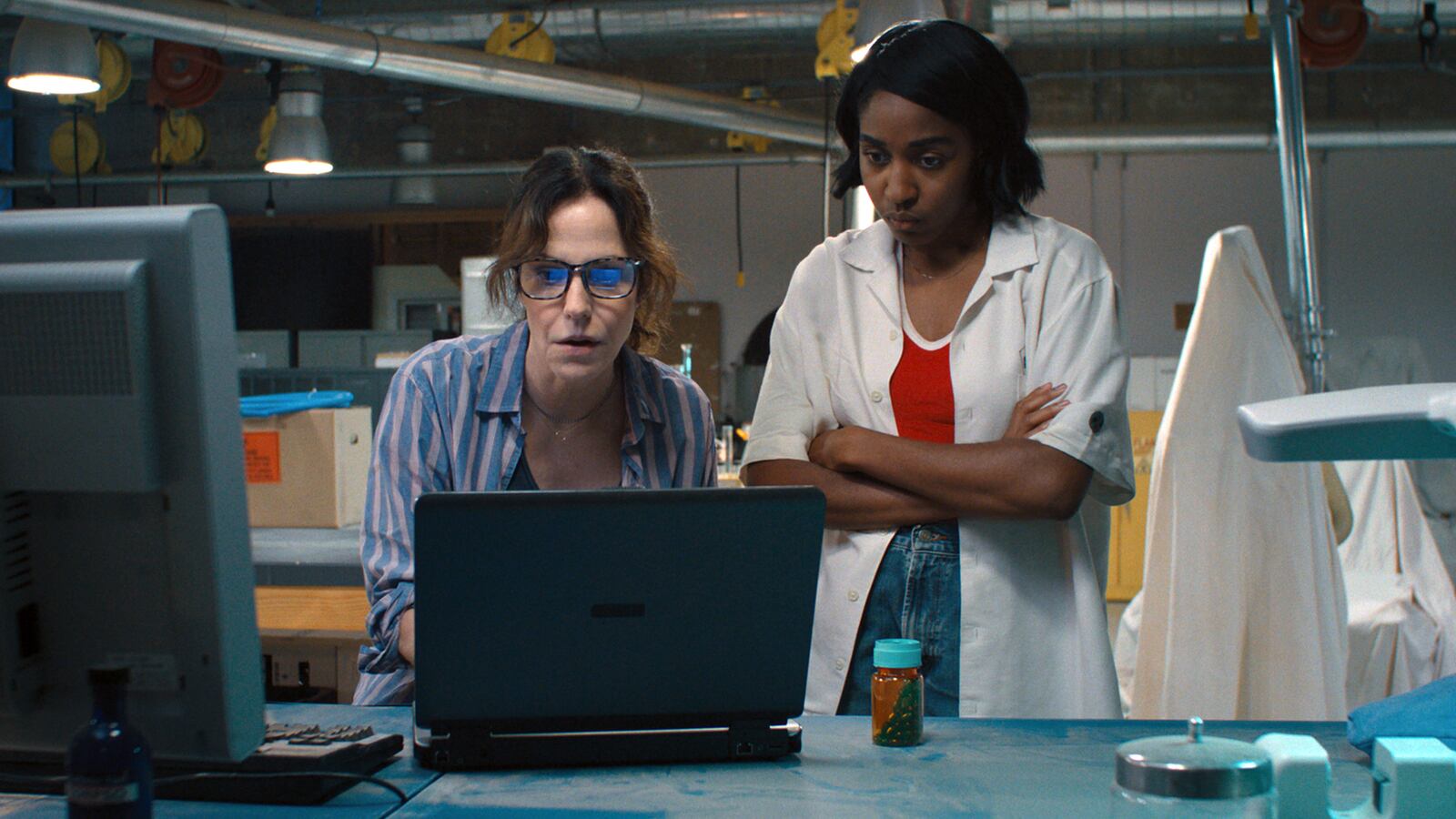Since Groundhog Day reinvented the genre, time-loop movies have been a way to tell a high-stakes story in a low-stakes way (the exception being Edge of Tomorrow, every aspect of which is high-stakes). In everything from Run Lola Run to Happy Death Day to Palm Springs, the main characters are forced to relive the same experiences, allowed to come back and do it all over again as soon as the loop runs out. Some of these movies take the heady route, attempting to explain the mechanics of how one becomes caught in a knot of time, and how they might escape.
Brazilian director Bernardo Britto’s second feature Omni Loop, out Sept. 20, on its surface, seems like one of these theory-heavy films, centered as it is on two experimental physicists. But as the characters move through their preordained paths, the film proves it’s about much more than that.
Zoya Lowe (Mary-Louise Parker) awakens in a hospital bed, her doctors and family members gathered by her side to tell her she has a black hole growing in the middle of her chest, and maybe a week to live. Zoya has, in fact, lived this moment—and the following few days—innumerable times already, and is doomed to do it forever unless she can figure out a way to escape, possibly even curing herself in the process. When she bumps into Paula (Ayo Edebiri), a student at the physics department of a university Zoya attended, the two hatch a plan (that Zoya has to endlessly repeat) to figure out what’s causing Zoya’s predicament and what she can do to stop it.
There are delightful little details in Omni Loop even aside from the time-travel stuff that cement it firmly in the realm of sci-fi: Zoya’s black-hole ailment, her stash of mysterious blue pills, a continuously shrinking man kept in a glass terrarium at the university whom Zoya and Paula consult on complex physics problems. These things are commonplace in the world of the film. Interior black holes are akin to a cancer diagnosis. The shrinking man was a famous yet semi-failed experiment stashed in a university office desk drawer until Paula remembered to dig him out. There’s a fun, almost-near-future texture to the movie that pads its more maudlin instincts.

Ayo Edebiri
Magnolia Pictures/Magnolia PicturesThese zippy things aren’t really the focus of the film, which has much headier, heartstring-pulling goals. Parker plays Zoya as an otherwise healthy middle-aged mother who is not yet ready to die, and who is also haunted, guiltily, by the sense that, having given up on her lofty quantum-physics goals in favor of focusing on her family, she squandered her life’s potential. Paula, on the other hand, is largely purposeless, latching onto Zoya as a means to discover what she wants out of her own life. She asks Zoya questions about her conundrum that hadn’t even occurred to Zoya, even though she’s been living through this week for a lifetime. There’s an intriguing push and pull between both characters whenever they’re onscreen together, as if they’re on two opposite ends of a seesaw, steadily coming together somewhere in the middle.

Mary-Louise Parker
Magnolia Pictures/Magnolia PicturesUltimately, Omni Loop is about the inevitability and unfairness of death, and the choice to accept that what we’ve done with our share of time on this planet is good enough—and that even if, through some anomalous rip in the fabric of the universe, you manage to cheat for a little while, the answer will always be the same. It’s a wryly funny movie that is also unafraid to be quite sad, dealing as it does with the sorts of topics that frighten even the most seasoned quantum academic. The climactic ending may test some viewers’ patience with semi-predictable Big Reveals, and the thematic resolution comes a little too fast and feels a little too pat, but that’s the thing about loops: The end is far less important than the path it takes to get there.






